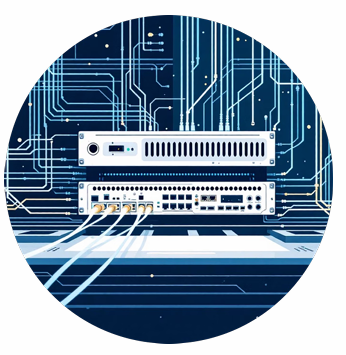
Network Infrastructure Modernization and Automation
Transforming network operations from **reactive management** to **proactive, automated infrastructure planning and deployment.**
🚨 Service Update: We are expanding our fiber network in QLD. Check coverage today!

Transforming network operations from **reactive management** to **proactive, automated infrastructure planning and deployment.**

Core routing with MPLS, EVPN, SR-TE capabilities for CellSite applications
Edge routing featuring MPLS, BNG, EVPN for network edge operations
Aggregation layer with MPLS, L2VPN, L3VPN support
Core/Edge routing with MPLS and Segment Routing capabilities

DWDM/OTN solutions for NLD and Metro segments with high-capacity Tbps capabilities

DWDM/ROADM technology spanning NLD, Collector, and Metro applications

OTN/DWDM solutions for Metro and Access layer connectivity

From reactive additions to **centralized, automated capacity planning** with predictive scaling.
**Automated DWDM/OTN planning** with fast wavelength provisioning and modular expansion.
**GIS-integrated visibility** with standardized build processes and automated acceptance.

01
Network capacity and resource planning systems.
02
Asset and configuration tracking platforms.
03
Network monitoring and incident response tools.
04
Service activation and configuration management.
05
Network performance analytics and optimization.

L2/L3/MPLS service automation with plug-and-play expansion capabilities.
Performance-based planning for proactive capacity upgrades and optimization.
Unified platform connecting IP, Optical, and Fiber domains seamlessly.
Manual assignment causing delays in upgrade and expansion rollouts.
Automated assignment system for efficient resource allocation.
Mobile tools with quality-linked closure codes for field deployment, integrations and operations.

Deploy integrated plan-to-build system covering site finalization to acceptance.
Establish API integration across IP, Optical, and Fiber infrastructure.
Roll out automated assignment and field applications for operational efficiency.
